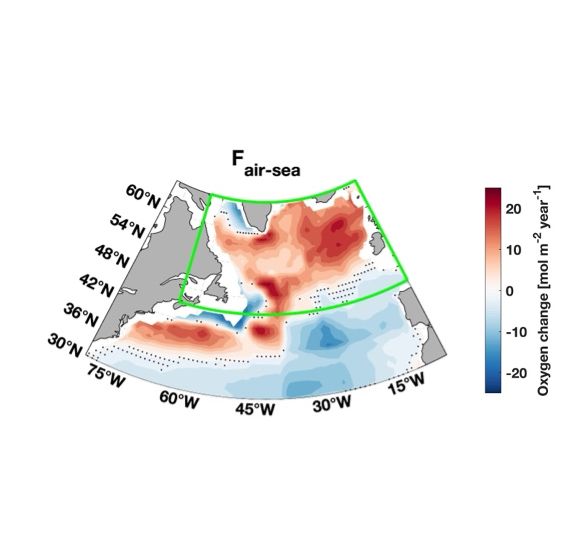

See also this paper relating O2 & gyre strength: www.nature.com/articles/s43...
Though these are about the gyre, which is related to, but not the same as, AMOC

See also this paper relating O2 & gyre strength: www.nature.com/articles/s43...
Though these are about the gyre, which is related to, but not the same as, AMOC
I’m currently looking at that, and preliminary results indicate O2 uptake & change are strongest in 2015/16, possibly related to North Atlantic Oscillation
I’m currently looking at that, and preliminary results indicate O2 uptake & change are strongest in 2015/16, possibly related to North Atlantic Oscillation
15/🧵

15/🧵
14/🧵
14/🧵
- Actual numbers and uncertainties
- Which gas exchange parameterization we used (and why)
- All the nitty gritty calculations - also available @ github.com/jkoell
- What all this means for how we define ocean ventilation in models
13/🧵
- Actual numbers and uncertainties
- Which gas exchange parameterization we used (and why)
- All the nitty gritty calculations - also available @ github.com/jkoell
- What all this means for how we define ocean ventilation in models
13/🧵
12/🧵
12/🧵
So does this mean the Lab Sea doesn’t matter?
11/🧵

So does this mean the Lab Sea doesn’t matter?
11/🧵
The data shows that water is progressively modified: light water becomes SPMW, which becomes denser SPMW, which becomes LSW. The high O2 of LSW is the end result of uptake throughout this process
10/🧵

The data shows that water is progressively modified: light water becomes SPMW, which becomes denser SPMW, which becomes LSW. The high O2 of LSW is the end result of uptake throughout this process
10/🧵
Surprisingly, the change is strongest in subpolar mode water (SPMW), not Labrador Sea Water (LSW), the highest O2 water mass
9/🧵

Surprisingly, the change is strongest in subpolar mode water (SPMW), not Labrador Sea Water (LSW), the highest O2 water mass
9/🧵
8/🧵

8/🧵
We find that almost the entire SPNA (green box) is an annual oxygen sink, meaning O2 flows from the atmosphere into the ocean year after year
7/🧵

We find that almost the entire SPNA (green box) is an annual oxygen sink, meaning O2 flows from the atmosphere into the ocean year after year
7/🧵
To find out, we used GOBAI-O2, a data product created by @jdsharp.bsky.social with the help of an army of ocean robots that sample all over the world (@bgc-argo.bsky.social)
6/🧵

To find out, we used GOBAI-O2, a data product created by @jdsharp.bsky.social with the help of an army of ocean robots that sample all over the world (@bgc-argo.bsky.social)
6/🧵
But we don’t fully understand when, where, or how much O2 the ocean “breathes in” now, making it difficult to accurately predict future changes
5/🧵
But we don’t fully understand when, where, or how much O2 the ocean “breathes in” now, making it difficult to accurately predict future changes
5/🧵
But - surprise surprise - this delicate balance is threatened by climate change. The ocean has lost 2% of its oxygen since the 1950s, with serious consequences for marine life
4/🧵
But - surprise surprise - this delicate balance is threatened by climate change. The ocean has lost 2% of its oxygen since the 1950s, with serious consequences for marine life
4/🧵
And unlike those of us breathing air, ocean organisms can’t always rely on there being enough O2. Without sunlight for plants to grow below ~200m, ventilation is the main O2 supply for most of the ocean
3/🧵
And unlike those of us breathing air, ocean organisms can’t always rely on there being enough O2. Without sunlight for plants to grow below ~200m, ventilation is the main O2 supply for most of the ocean
3/🧵
The goal was to better understand present-day SPNA ventilation to help improve future projections
2/🧵
The goal was to better understand present-day SPNA ventilation to help improve future projections
2/🧵


